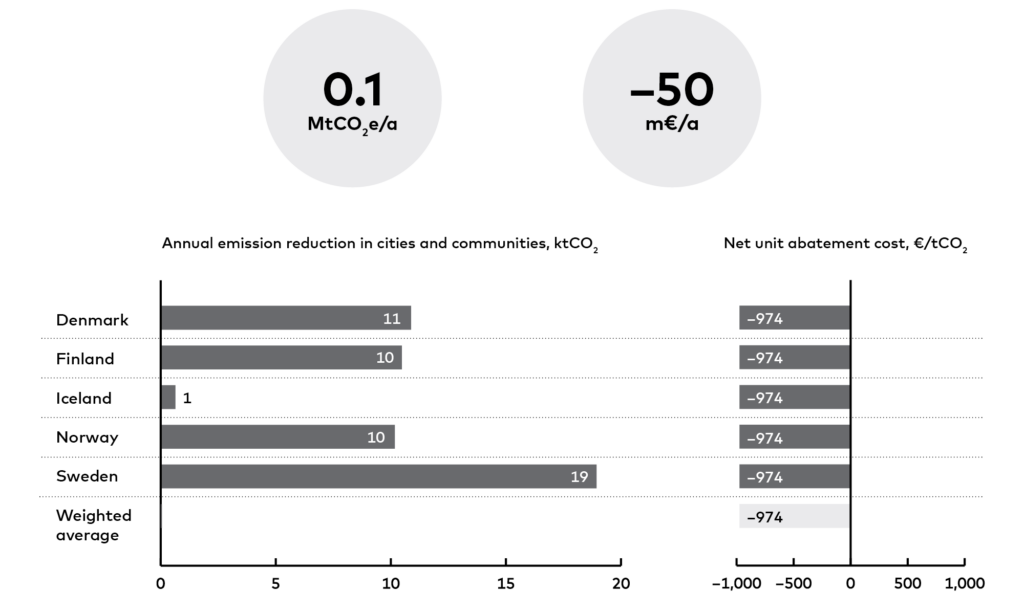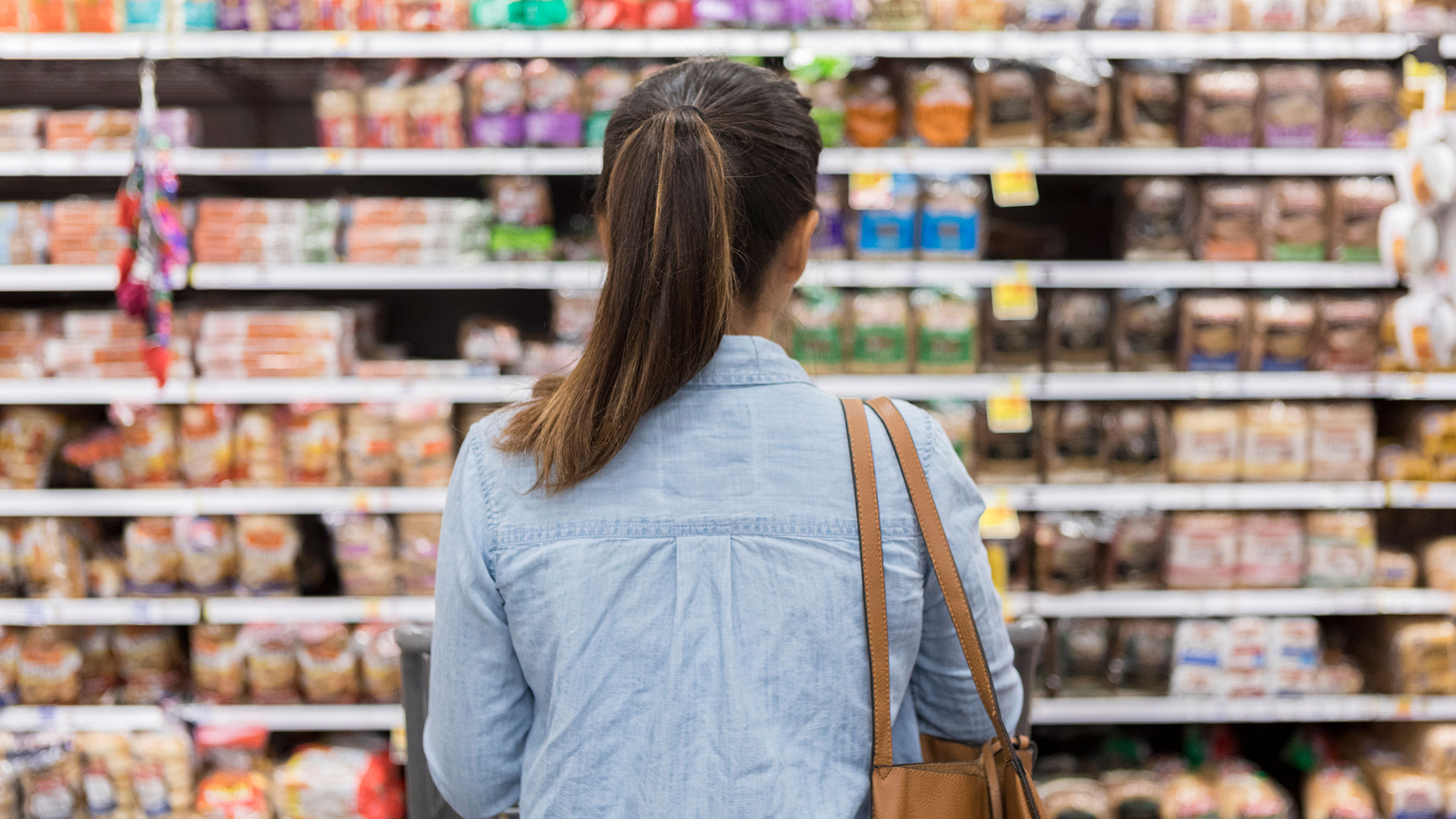Climate impact
In Finland, the City of Vantaa, together with the Vantaa Parish Union, founded what is known as a Shared Table action model that focuses on distributing surplus food through communal meals and bags of food. Since 2015, the city and the parish union have organised the centralised logistics of food collection from 35 donor factories, wholesalers and supermarkets. The food is distributed to 65 food-aid deliverers, half of which started to deliver food aid as a result of the Shared Table network. The model has been adopted by ten other regions across Finland.
Avoiding food waste reduces emissions if less food is produced because of it.
We assume that the emission reduction of avoided food waste equals the climate impact of that food. The average carbon footprint of a kilogram of typical retail surplus food in Finland is estimated to be 1.9 kgCO2e.
We estimate that the Shared Table model has increased the avoided food waste by one kilogram per inhabitant. If all the other municipalities in the Nordics did the same, it would reduce emissions by 51 ktCO2e.
Costs and savings
The collection logistics in Vantaa amount to an average of 0.8 €/kg of delivered food. In addition, the distribution is carried out by volunteers. We estimate that the savings in biowaste fees and the reduced need to purchase food are 2.6 €/kg of delivered food. Therefore, the abatement cost is –974 €/tCO2e.

Other benefits
In Vantaa, the project has created local jobs and employed long-term unemployed people, giving them a chance to come into contact with work life again. Food aid can help some of the poorest people in the society. The communal approach to distributing food aid has also reduced loneliness among the people receiving it.
In general, the reduction of food waste reduces pressure to expand land, water and other resource inputs to agriculture. In countries where organic waste is still landfilled, avoided food waste also avoids emissions of methane.
Barriers
- Unnecessary bureaucracy can contribute to food waste and make it difficult to donate food.
- The ability to distribute food depends on the capacity of food-aid services, which are prone to a lack of resources and rely quite heavily on volunteer work.
- Often there is no readily existing co-operation model between the different participants, such as donors, logistics firms and the different types of food-aid deliverers.
- There might not be large financial incentives for the municipality to support food-aid services, or for the retail outlets and factories to donate surplus food.
Enablers
- Public awareness of food waste encourages more people to pay attention to minimising it.
- A co-operative culture across public, private and third-sector organisations facilitates the creation of functioning co-operation models.
- Regulation that allows the distribution of food after the sell-by period can enable larger donation volumes.
- Relatively high biowaste fees encourage food donations.
- Regulation that gives food-aid organisations the right to return poor-quality products to the donor ensures that biowaste will not be dumped on them.


















RELATED SOLUTIONS